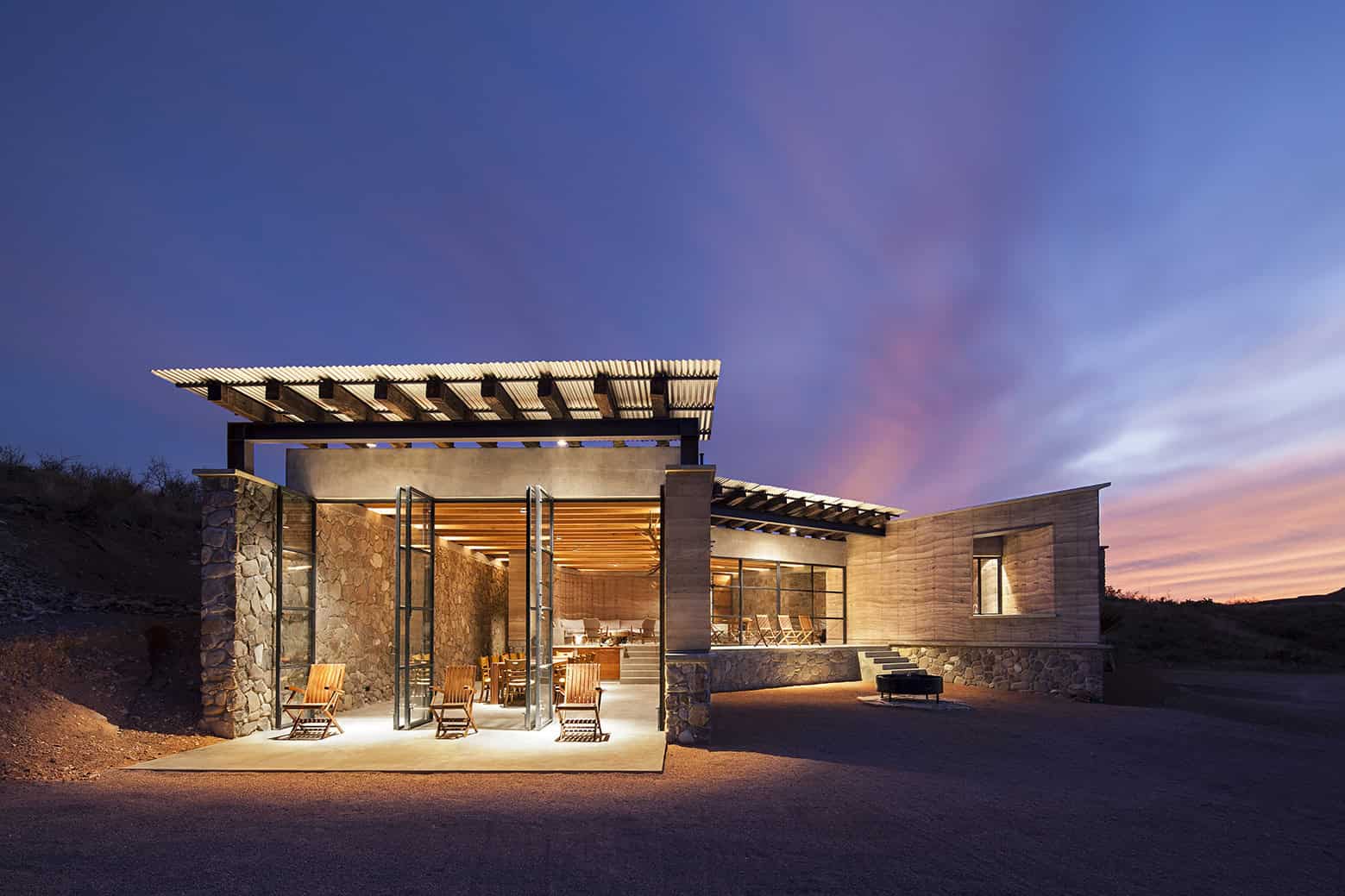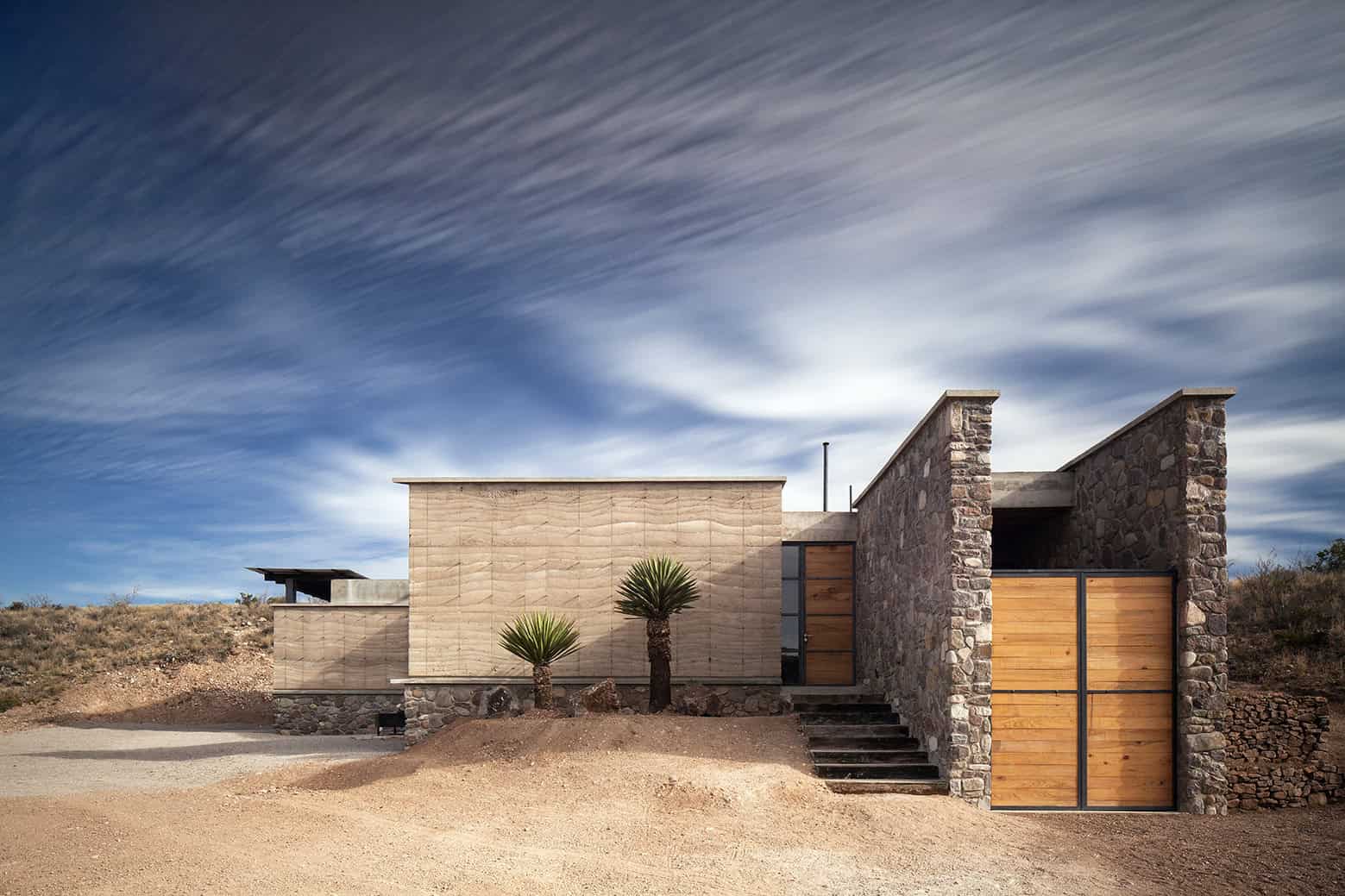Project: The Cave in Pilares
Architects: Greenfield
Location: Coahuila, Mexico
Area: 2,798 sq ft
Photographs by: Adrian Llaguno
Greenfield, a Monterrey studio, used walls of rammed earth and rugged stone to frame the rooms of this villa for the staff of an animal breeding facility in Mexico’s Maderas del Carmen natural park.
The villa is called The cave in Pilares and is located in Los Pilares which is a 5,000 hectare conservation facility in the foothills of the Sierra Madre Oriental mountains.
The villa is used by the researchers as a space for relaxing and socialising, so there are no bedrooms. The main spaces are large living and dining areas with generous views out over the scenic mountain landscape.
Greenfield founder Kenji López Rivera based his design around a desire to use natural and recycled materials that could be sourced locally and would feel appropriate for the rural setting.


From the architects: ” In Mexico’s northern border, inside the National Park “Maderas del Carmen”, there’s a natural reserve that fuses the passion of fauna conservation and the pleasure of enjoying nature through architecture.
The ecological reserve “Pilares” is located in the northern region of the state of Coahuila, in a 40,000 hectares (99,000 acre) land that is fully dedicated to the conservation of endangered species and the reproduction of others that had already disappeared from mexican territory, like the Bighorn sheep. Furthermore, this is an oasis in the contemporary world: a place isolated from urban development and linked to it’s Texan counterpart (The National Park Big Bend) by the greatness of it’s mountains and the pureness of the ecosystem.
In this context emerges “The Cave”, an architectural project that materializes the idea of creating a neutral space, one for socialization and contemplation, with a strong relation to the wild of a zone where the deer, the black bear, the bighorn sheep, the antelope and the american indian transit freely like if time follows it’s own rules there.”


“Like in vernacular architecture, the building responds directly to the site where it’s emplaced, with basic and even primitive volumes that rise with materials from the region, gaining color and texture right from the landscape. The feeling while visiting the project resembles to that of a cave, partially buried into the ground, providing a shelter from the exterior and allowing the user enjoy it from the warming interior.
The orientation of the building provides natural light from the north and directs its main views, through exterior terraces towards the highest peaks of the Sierra Madre Oriental. In the interior, the program includes a large dining room/boardroom, a living room, a breakfast area, bathroom, a wine cellar, a small kitchen and a partially covered space for grills.”
“To fully know this project, it is precise to understand the history of its materials and processes of development. Because of the nature and isolation of the place, it was important to use and reuse the resources of the area, achieving that 90% in weight of all materials was collected from ranches and sandbanks located within a radio smaller than 10 km.
The metallic corrugated sheets and hardwood from abandoned rail tracks were found in the area. The walls are made of local materials: earth and stone are worked in vertical planes, after being extracted from their horizontal position. The constructive system combines river rocks, pine wood, rammed earth and concrete, which are elements rich in textures that mimic the multicolor landscape that can be perceived during sunset.”
This website uses cookies.